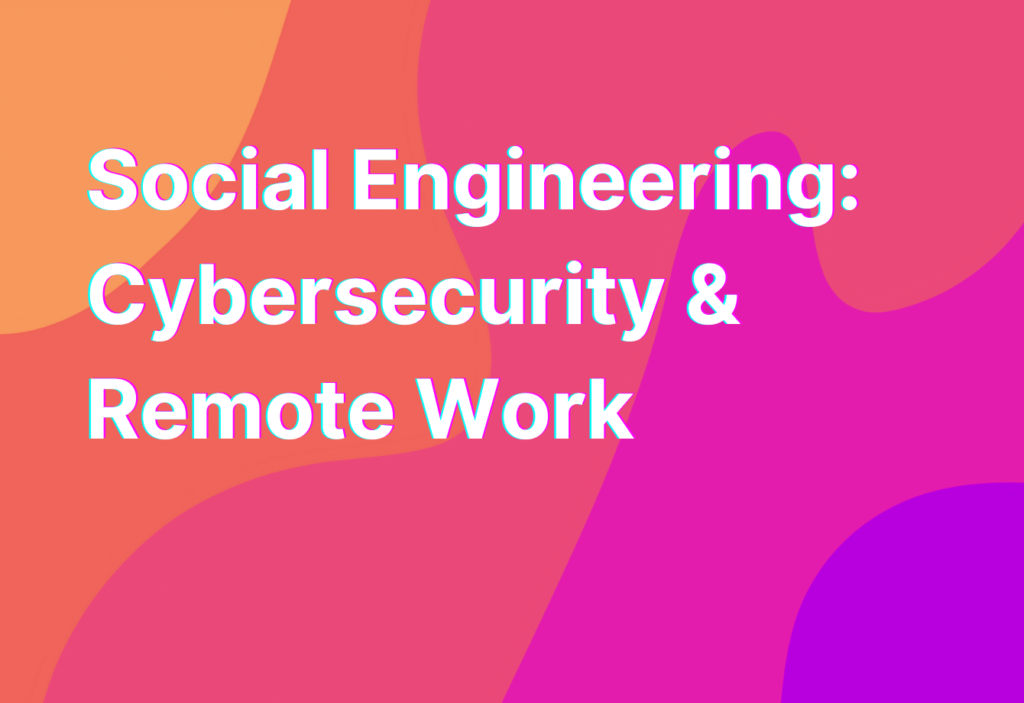Social Engineering: Cybersecurity & Remote Work
Hey there, remote work enthusiasts! It’s Ashley, your friendly remote work advocate, back with another informative blog post. Today, we’re diving into the fascinating world of social engineering and its impact on cybersecurity in the remote work landscape. So grab your favorite cup of coffee and let’s get started!
What is Social Engineering?
Social engineering, my friends, is not about building bridges or making new friends. It’s a term used to describe the manipulation of individuals to gain unauthorized access to sensitive information or systems. In simpler terms, it’s like a con artist tricking you into revealing your personal information or granting them access to your computer or network.
Now, you might be wondering, “Ashley, how does social engineering relate to remote work?” Well, my curious reader, remote work opens up a whole new world of opportunities for cybercriminals to exploit unsuspecting individuals. Let’s explore some common social engineering techniques and how they can impact remote workers.
Phishing: The Classic Social Engineering Technique
Phishing, my friends, is like the classic scam that never goes out of style. It involves sending deceptive emails or messages that appear to be from a trustworthy source, such as your bank or a popular online service. These messages often contain links or attachments that, when clicked or opened, can lead to malware infections or the theft of sensitive information.
As a remote worker, it’s crucial to be vigilant when it comes to phishing attempts. Always double-check the sender’s email address, hover over links to see where they lead, and never download attachments from unknown sources. Remember, cybercriminals are getting craftier by the day, so stay on your toes!
Pretexting: The Art of Deception
Pretexting, my friends, is like a masterful act of deception. It involves creating a false scenario or pretext to trick individuals into revealing sensitive information or performing certain actions. For example, a cybercriminal might pose as an IT support technician and call you, claiming that there’s a security issue with your computer. They’ll then ask you to provide your login credentials or grant them remote access to your system.
When working remotely, it’s essential to verify the identity of anyone requesting sensitive information or access to your devices. Don’t be afraid to ask for their name, department, and contact information. And remember, if something feels off or too good to be true, it probably is!
Tailgating: Not the Fun Kind
Tailgating, my friends, has nothing to do with football or barbecues. It’s a social engineering technique where an unauthorized individual gains physical access to a restricted area by following closely behind an authorized person. In the remote work context, this could mean someone gaining access to your workspace or computer while you’re momentarily distracted.
To prevent tailgating, make sure to secure your physical workspace, especially if you’re working in a shared environment. Lock your computer when you step away, and be mindful of who’s around you. And remember, always be cautious of strangers trying to sneak their way into your workspace!
Wrapping Up
Well, my fellow remote work enthusiasts, we’ve reached the end of our journey through the world of social engineering and its impact on cybersecurity in the remote work realm. Remember, staying informed and vigilant is key to protecting yourself and your sensitive information.
If you want to dive deeper into the topic of cybersecurity and remote work, I highly recommend checking out this informative article on Trojan horse attacks. It’s a fascinating read that will give you even more insights into the ever-evolving world of cybersecurity.
Until next time, stay safe, stay secure, and keep embracing the wonders of remote work!


